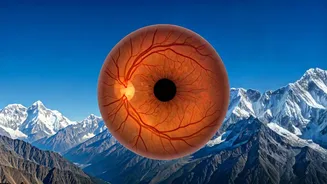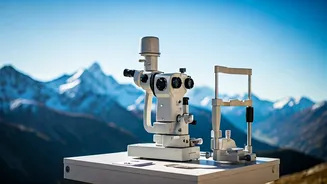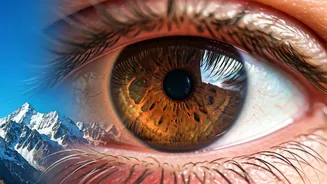Altitude and Vision
High-altitude retinopathy, a condition impacting trekkers, can unexpectedly lead to vision loss. The reduced oxygen levels at high altitudes can cause
blood vessels in the retina to swell and leak fluid, leading to blurred vision or even complete vision loss. This condition is not exceedingly rare, and its likelihood increases with higher altitudes. The physiological stress of high-altitude environments places unique demands on the body, especially the eyes. Understanding the underlying mechanisms behind HAR is vital for recognizing the potential risks of trekking at high altitudes and taking appropriate preventative steps. It is important to emphasize that while the condition is not overly common, it can have serious consequences and trekkers must be informed.
Causes and Risk
Several factors make trekkers more susceptible to high-altitude retinopathy. Going to high altitudes too rapidly without proper acclimatization significantly raises the risk. Existing health conditions, such as high blood pressure or diabetes, can make individuals more vulnerable. Additionally, prolonged exposure to high altitudes, particularly above 15,000 feet, substantially increases the likelihood of vision loss. Certain factors, such as dehydration or underlying cardiovascular conditions, can exacerbate the risk. Recognizing these vulnerability factors allows trekkers to take preventive measures and make informed decisions about their treks. Proper planning, acclimatization, and health awareness are essential to minimize risks when trekking at high elevations.
Warning Signs to Watch
Trekkers should be aware of several warning signs that could indicate high-altitude retinopathy. Initial symptoms might include blurred vision, eye pain, or seeing spots or floaters in the field of vision. More severe symptoms involve significant vision loss, which may occur suddenly or develop gradually. Any visual disturbances at high altitudes necessitate immediate attention and medical evaluation. Ignoring early warning signs can lead to permanent eye damage. Immediate action can prevent further complications. Regularly assessing your vision, particularly while at high altitudes, is a crucial part of safe trekking practices, ensuring timely intervention and safeguarding long-term eye health.
Protecting Your Eyes
Various measures can help protect trekkers’ eyes before and during high-altitude travel. Acclimatization is key; gradually ascending to higher altitudes allows the body to adjust to lower oxygen levels. Staying hydrated and avoiding alcohol consumption can also minimize the risk. Using UV-protective sunglasses is essential to shield the eyes from intense sunlight at high elevations. Regular breaks from exertion and rest can reduce strain on the eyes. Trekkers should also consider consulting a doctor before the trek, especially if they have pre-existing health conditions or are on any medication. Taking these precautions can greatly lower the chances of developing high-altitude retinopathy, letting trekkers enjoy their journey.
Immediate Next Steps
Experiencing blurred vision or eye pain at high altitudes demands immediate action. The first step involves ceasing further ascent and descending to a lower altitude as quickly as possible. This can help reduce the pressure on the eyes and alleviate symptoms. Seeking immediate medical attention is vital; a healthcare professional can assess the condition and provide appropriate treatment. Prompt diagnosis and treatment are crucial to prevent any permanent damage and improve the chances of recovery. Always be prepared to seek help; carry necessary emergency contacts, and ensure access to communication. Prioritizing swift action and medical evaluation can significantly improve the outcome and prevent further complications for trekkers experiencing altitude-related vision problems.











